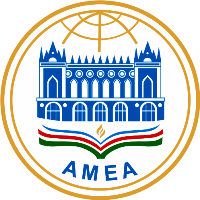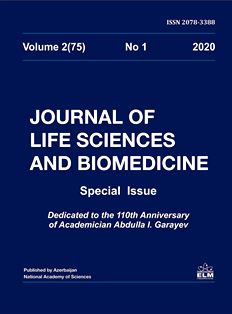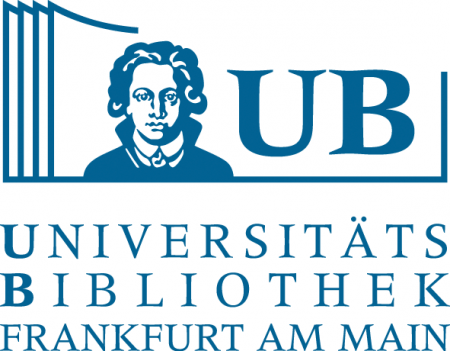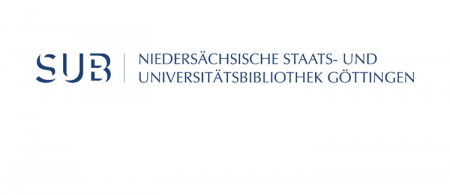
Research on high genetic resources of oak forests in Karabakh and highlighting benefits of reconstruction of oak forests to our ecology and economic development G.N. Aliyeva
Research article: Research on high genetic resources of oak forests in Karabakh and highlighting benefits of reconstruction of oak forests to our ecology and economic development
Author (s): G.N. Aliyeva
DOI: http://dx.doi.org/10.29228/jlsb.29
Institute of Dendrology,Azerbaijan National Academy of Sciences, 89 S.Yesenin Str., Baku AZ1044, Azerbaijan
For correspondence: bio890@mail.ru
Received: September 09, 2021; Received in revised form: September 27, 2021; Accepted: October 11, 2021
ABSTRACT
The oak is an important part of our natural and cultural heritage. Oak trees had a special place in the formation of biodiversity in the rich flora of Karabakh. Thus, more than 35% of oak forests were distributed in the Lesser Caucasus, and 60% of the ecosystem of the Minor Caucasus is oaks. Of course, this information is based on pre-First Karabakh War data. At present, this percentage has changed, and the biodiversity of Karabakh and the Lesser Caucasus is under serious threat. The reason is the Armenian vandalism known to the world community. The biodiversity of oaks in Karabakh in the pre-occupation period was investigated, the environmental requirements of the species were noted for the restoration of existing oaks in these areas and the benefits of reforestation to the nature and economy of Azerbaijan were brought to attention in this review.
Keywords: Karabakh, oak, afforestation, economic and environmental benefit
REFERENCES
Afforestation Techniques General Directorate of Forestry, Department of Afforestation, Republic of Turkey (in turkish) https://web.ogm.gov.tr/ekutuphane/Sunumlar/A%C4%9Fa%C3%A7land%C4%B1rma%20Teknikleri.pdf
Agamirov U.M. (1961) Diversity form of Pedunculate oak oak (Quercus longipes Stev.) in Azerbaijan and its importance for afforestation and gardening. Abstract of Dissertation for the degree of candidate of agricultural sciences. Kharkov
Akkemik U., Yalchın Y., Hatice Y., Orhan S., Ece S., Ferdi A., Huseyin D. (2020) Current distribution of Quercus ilex in Turkey, determination and evaluation of new distribution areas. Eurasian Journal of Forest Science, 8(3): 195-220; doi: 10.3195/ejejfs.786041 (in Turkish)
Aliyev J.A., Akparov Z.I., Mammadov A.T. (2008) Biological Diversity, Baku: Elm, p. 101-105 (in Azerbaijani).
Aliyeva G. (2021) Variations in leaf morphological and functional traits of Quercus castaneifolia C.A. Mey. (Fagaceae) in Azerbaijan. Russia, Skvortsovia, 7: 41-53; doi: 10.51776/2309-6500_2021_7_2_41
Aliyeva G., Mammadova Z., Ojaghi J.M., (2020a) Variation analysis of leaf morphological traits in some oak species (Quercus sp.), Azerbaijan Republic. Advances in Biology & Earth Sciences, 5(3): 232-240; doi: 10.33619/2414-2948/59/01.
Aliyeva G., Mammadova Z., Ojagi J. (2020b) Evaluation of morphological traits and genotypes by multivariate statistical methods in some oak species. Bulletin of Science and Practice, 6: 10-18; doi: 10.33619/2414-2948/59/01.
Aliyeva G., Mammadova Z., Ojaghi J., Pourbabei H (2020c) Inter- and intra-population variations in leaf morphological and functional traits of Quercus petraea subsp. iberica under ecological factors in Azerbaijan, Plant & Fungal Research, 3: 61-68; http://plantfungalres.az/en/journals/49.
Aliyeva G., Mammadova Z., Ojaghi J (2021a) Morphometric leaf variation in Quercus of Azerbaijan. Bartın Orman Fakultesi Dergisi, 23(2): 579-585; doi: 10.24011/barofd.866505
Aliyeva G., Ojaghi J., Rustamova S. (2021b) Molecular diversity and phylogeny analysis of Azerbaijan oaks (Quercus spp.) revealed by RAPD markers. Caspian Journal of Environmental Sciences (CJES), 19(3): 457-468; https://cjes.guilan.ac.ir/article_4932.html.
Asgarov A. (2016) Flora of Azerbaijan. Baku: TEAS Press (in Azerbaijani).
Bandin A.P., Prilipko L.I. (1964) Oak genus: Trees and shrubs of Azerbaijan. Baku: Azerbaijan SSR AS Publishing House, II: 12-44 (in Azerbaijani).
Birkedal M., Fisher A., Karlsson M., Löf M., Madsen P. (2009) Rodent impact on establishment of direct seeded beech and oak on forest land. Scand J. For. Res., 24: 298-307.
Boratynski A., Marcysiak K., Lewandowska A., Jasinska A., Iszkulo G., Burczyk J. (2008) Differences in leaf morphology between Quercus petraea and Q. robur adult and young individuals. Silva Fennica, 42(1): 115-124.
Bullard S.H., Hodges J.D., Johnson R.L., Straka T.J. (1992) Economics of direct seeding and planting for establishing oak stands on old-field sites in the South. South J Appl For 16:35–40
Castro J., Zamora R., Hódar J.A., Gómez J.M. (2002) Use of shrubs as nurse plants: a new technique for reforestation in Mediterranean mountains. Restor. Ecol., 10: 297-305.
Castro J., Leverkus A.B., Fuster F. (2015) A new device to foster oak forest restoration via seed sowing. New Forests, 46: 919–929; doi: 10.1007/s11056-015-9478-4
Ekhvaia J., Simeone M.C., Silakadze N., Abdaladze O. (2018) Morphological diversity and phylogeography of the Georgian durmast oak (Q. petraea subsp. iberica) and related Caucasian oak species in Georgia (South Caucasus). Tree Genet. Genomes, 14(2): 1-15; doi: 10.1007/s11295-018-1232-6.
Fady B., Cottrell J., Ackzell L. et al. (2016) Forests and global change: what can genetics contribute to the major forest management and policy challenges of the twenty-first century? Reg. Environ. Change 16: 927–939; doi: 10.1007/s10113-015-0843-9
Fady B., Davi H., Martin-StPaul N. et al. (2021) Caution needed with the EU forest plantation strategy for offsetting carbon emissions. New Forests, 52: 733–735; doi: 10.1007/s11056-020-09830-1
Gabitova A.A. (2012) Pedunculate oak (Quercus robur L.) in the South Urals: ecological-genetic analysis of the population structure. Abstract of Dissertation for the degree of candidate of biological sciences, UFA.
García-Salmerón J. (1995) Manual de repoblaciones forestales II. Escuela Técnica Superior de Ingenieros de Montes, Madrid.
General Directorate of Forestry Strategic Plan 2017-2021 (2016) Republic of Turkey, Ministry of Forestry and Water Affairs. General Directorate of Forestry. https://www.ogm.gov.tr/ tr/stratejik-plan.
Gunal N. (2011) Geographical distribution, ecological and floristic characteristics of the almond oak (Quercus ilex) in Turkey. (Ed: Deniz Ekinci) Physical Geography Studies: Systematic and Regional. Turkish Geography Institute Publication, 6: 267-278 (in Turkish).
http://www.anl.az
https://rastenievod.com/dub.html
https://ucanr.edu/sites/gsobinfo/files/152328.pdf (2012) Why are oaks important? Presented by Rosi Dagit, RCD of Santa Monica Mts. August.
https://www.catalogueoflife.org
Jie D., Dilnur A. (2021) Basic Theory and Methods of Afforestation, Silviculture, Beijing: China Forestry Press; doi: 10.5772/intechopen.96164.
Lachin yurdu (2014) №4 (15): 77 (in Azerbaijani).
Magnus L., Julien B., Mattias E., Linda K., Petersson, Adrian V. (2021) The influence of fencing on seedling establishment during reforestation of oak stands: a comparison of artificial and natural regeneration techniques including costs. European Journal of Forest Research, 140: 807–817: doi: 10.1007/s10342-021-01369-w.
Mammadov Q.Sh., Khalilov M.Y. (2002) Forests of Azerbaijan. Baku: Elm, 472 p. (in Azerbaijani).
Mammadov T.S. (2016) Dendroflora of Azerbaijan. Baku: Elm, V: 400 p. (in Azerbaijani).
Menitsky Y.L. (1970) Oaks of Caucasus. Leningrad: Nauka (in Russian).
Menitsky Y.L. (2005) Oaks of Asia. USA: Science Publishers of Enfield Press, 549 p.
Papini A., Simeone M.C., Bellarosa R., Spada F., Schirone B. (2011) Quercus macranthera Fisch. & Mey. ex Hohen. and Quercus iberica M. Bieb.: Taxonomic definition and systematic relationships with European oaks inferred from nuclear internal transcribed spacer (ITS) data. Plant Biosystems, 145(1): 37-49.
Peter A.S. (2004) Oaks and oak forests in Caucasia. International Oak, 15: 9-29.
Red book of Azerbaijan SSSR (1989) Rare and endangered species of animals and plants. Editors: B.M.Adigozalov U.K.Alakbarov, M.A.Musayev et al. Baku: Light, 544 p. (in Azerbaijani)
Rural Environment (2019) Relic forests of Central Anatolia. Rural Environment and Forestry Problems Research Association. ISBN: 978-9944-0142-7-4, Friend Basım Sanayi Ltd. Sti., Ankara (in Turkish). http://kirsalcevre.org.tr/KC/KClibrary/eCopy/2850.pdf.
Schirone B., Vessella F., Varela M.C. (2019) EUFORGEN Technical Guidelines for genetic conservation and use for Holm oak (Quercus ilex). European Forest Genetic Resources Programme (EUFORGEN). European Forest Institute.
Selahattin P.I.E. (2020) A different distribution area of Ispir Oak: Hınzır Mountain (Akkıshla-Kayseri). Turkish Journal of Geography, 74: 39-46 (in Turkish).
Steven C.G., Vladan I. (2017) Direct seeding in reforestation – a field performance. Review. Eforesta, 4: 94-142.
White A.M., Long J.W. (2019) Understanding ecological contexts for active reforestation following wildfires. New Forests, 50: 41-56; doi: 10.1007/s11056-018-9675-z.























